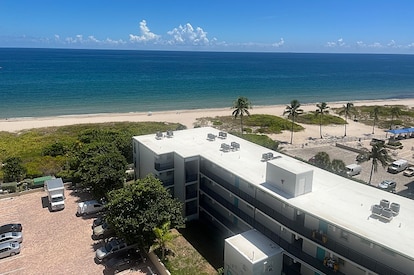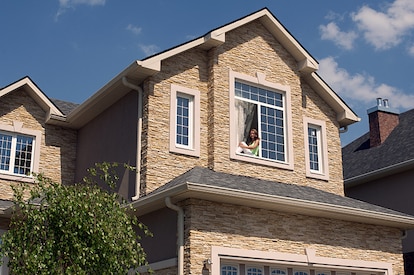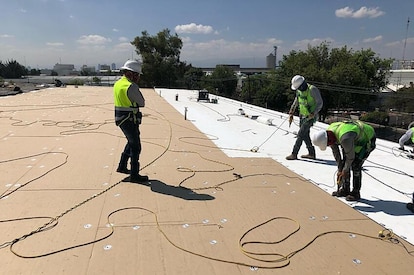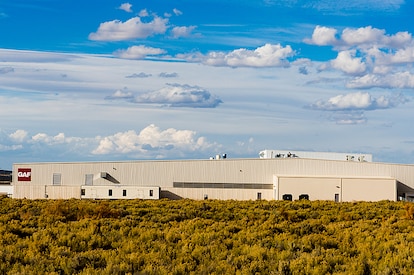
Coatings and Liquid-applied Membranes— what's in a name?
Liquid-applied roof membranes (LAM) and roof coatings (aka, maintenance coatings) are not only here to stay, their use is on the rise. This blog takes a look at how the building code and the roofing industry generally differentiate between liquid-applied roof membranes and roof coatings. There is confusion because the intended use of each is different, yet many of the materials are the same for both applications. Here's what you need to know to help understand and differentiate between the two.IntroductionCoatings have been used in the construction and roofing industries for a very long time! They have been made from many different materials--from beeswax and pitch some 5000 years ago, to lacquers and varnishes just a couple thousand years ago, to our current polymer-based materials. According to the Roof Coating Manufacturers Association, "the most dramatic advance in coating properties has come in the past 40 years, with the development of polymers1." Polymer-based coatings are used on plaza decks, parking garages, balconies, playgrounds, and roofs, for example, to provide a level of water-resistance and an aesthetically pleasing surface. Polymer-based liquid-applied membranes are used as the water-proofing layer for new roofs, replacement roofs, and roof re-cover systems. The common polymer-based materials include acrylics, silicones, and urethanes. More information about these materials can be found here.The spotlight is on these types of polymers because the materials we use for coatings are quite often also being used as liquid-applied membranes. How do we categorize and define these different installations that have different intended uses when both applications use essentially the same set of materials? This blog takes a close look at each of these product categories—coatings and liquid-applied membranes—to find their similarities and differences. And hopefully to provide clarity around the use of terms and definitions of use.Market ShareIn 2017, The Freedonia Group published a research study titled, "Liquid-Applied Roof Coatings in the US by Product and Subregion." According to that report, 11.85 million squares (1.185 billion square feet) of liquid-applied roof coating were installed in 2016. Approximately 40% was installed in the South, with the remainder essentially evenly split between the Northeast, Midwest, and West regions.The Freedonia Group reported a number of key findings that help explain the increased use of coatings."The South will be the leading US regional market for roof coatings in 2021, boosted by a high level of interest in cool roofing products and in protecting roofs against storm damage.The West will see solid growth as communities amend building codes to mandate the use of cool roofing.Liquid-applied roof coating demand in the Midwest and Northeast will be supported by rising use of roof coatings to rejuvenate older roofs instead of engaging in more costly reroofing projects."Note: The Freedonia Group's report does not separate market share based on liquid-applied materials used as roof coatings versus liquid-applied materials used as roof membranes.The use of coatings and liquid-applied membranes is increasing for a number of additional reasons as well.The use of materials that can be applied at ambient temperature is welcomed by an installer. There are no super-heated materials or open flames therefore reducing specific safety concerns.Materials are typically provided in containers sized for easy transport to and from rooftops.Common low-cost installation tools are used—brooms, brushes, squeegees; and simple, low-cost spray equipment.Using liquid-applied membranes can reduce waste created by a tear off.These materials are commonly light colored so they are reflective to help improve energy efficiency.Depending on the design (intent) and application of polymer-based materials, they can be used to extend the life of an existing roof when used as a coating, or to provide a warranted or guaranteed, waterproofing roof covering when used as a liquid-applied membrane.Defining the TermsOne way to help sort out the difference between coatings and liquid-applied membranes is to understand current definitions used in the industry. The International Building Code (IBC) is a good place to start since it is considered to be consensus-based.International Building CodeThe International Building Code does include a definition for coating, but does not include a definition for liquid-applied membrane."ROOF COATING. A fluid-applied, adhered coating used for roof maintenance or roof repair, or as a component of a roof covering system or roof assembly."IBC's definition of Roof Coating tells us three things.Coatings are fluid-applied and adhered (to a substrate)Coatings are used for maintenance or repair "Roof Repair" is defined as "Reconstruction or renewal of any part of an existing roof for the purposes of correcting damage or restoring pre-damage condition." Coatings can be a component of a roof system or roof assembly (which are the same according to ICC's definitions) "Roof Assembly" is defined as "A system designed to provide weather protection and resistance to design loads. The system consists of a roof covering and roof deck or a single component serving as both the roof covering and the roof deck. A roof assembly can include an underlayment, a thermal barrier, insulation or a vapor retarder." "Roof Covering" is defined as "The covering applied to the roof deck for weather resistance, fire classification or appearance." "Roof Covering System" is a "Roof Assembly" per IBC. Realistically, IBC's definition of Roof Coating doesn't get us that much closer to differentiating coatings and liquid-applied membranes, except that coatings are intended for maintenance and repair. And per IBC's definition, coatings can be used for Roof Repairs to "correct damage or restore pre-damage condition," but that is not how coatings are generally intended to be used.Taking a look at how Chapter 15 of IBC is arranged gives a bit of insight into IBC's perspective on coatings and liquid-applied membranes. Section 1507, Requirements for Roof Coverings, has and continues to include all low-slope and steep-slope materials used as roof coverings that are recognized by the code. This includes materials such as asphalt, wood, and slate shingles, as well as modified bitumen and single-ply roofing (and myriad others). The ICC has always included a section specifically for Liquid-applied Roofing within Section 1507, but there has never been a section for Coatings (until this year—more on that in a bit). To that end, the IBC is essentially saying Liquid-applied Membranes are categorized similarly to all other membranes that are used as roof coverings and their intended use is for "weather resistance, fire classification or appearance" (from IBC's definition as shown above). Because liquid-applied membranes are considered to be roof coverings, roof systems that use a liquid-applied membrane need to be tested for fire, wind, and impact… like any traditional membrane roof system.The liquid-applied membrane subsection within Section 1507 includes ASTM standards for materials not only used as liquid-applied membranes, but it includes the polymer-based materials (e.g., acrylics, polyurethanes, silicones) that are also intended to be used as coatings. This led to confusion within the code requirements, specifically how code officials would enforce the application of a coating product on an existing roof--as a new roof or as a maintenance item.To help with clarification and code enforcement, new language was added to the 2018 IBC in the Reroofing Section that stated a roof coating can be applied to (essentially) any existing roof without triggering reroofing requirements. The 2015 IBC and earlier versions only stated that coatings could be applied over an existing Spray Polyurethane Foam without removing any existing roofs. The IBC 2018 code language is as follows:"Section 1511.3, Roof Replacement. Exception 4: The application of a new protective roof coating over an existing protective roof coating, metal roof panel, built-up roof, spray polyurethane foam roofing system, metal roof shingles, mineral-surfaced roll roofing, modified bitumen roofing or thermoset and thermoplastic single-ply roofing shall be permitted without tear off of existing roof coverings."The additional language in the 2018 IBC was a very important step in distinguishing between coatings and liquid-applied membranes.The I-Codes were further revised regarding coatings and liquid-applied membranes in the 2021 IBC; a new section was added--Section 1509, Roof Coatings. This was an entirely new section, and importantly, Roof Coatings are not a subsection within Section 1507, Roof Coverings. This strengthens the differentiation from a code perspective that coatings are not considered to be a new roof covering. However, the IBC 2021 remains without a definition for liquid-applied roofing or liquid-applied membrane. The code ultimately relies on manufacturers' intentions for their products as the differentiating factor between coatings and liquid-applied membranes.ASTMUnfortunately, ASTM D1079, "Standard Terminology Relating to Roofing and Waterproofing" does not define either term.Industry PerspectiveWhat does GAF, a leading supplier of both systems, say about each? From GAF's page, Liquid-Applied Coating Solutions, the following descriptions are provided."What is a Liquid Membrane Roofing System?A liquid-applied roofing system consists of multiple components that come together to form a fully adhered, seamless, and self-flashing membrane. Components include liquid applied coatings and mesh membranes to create a true liquid membrane system that preserves and protects the integrity of the building." Examples of some of the leading products can be found here."What is a Roof Coating System?Roof Coatings are designed for extending the life of existing structurally sound roofs. GAF Roof Coatings are specially formulated to extend the life of roofs while protecting them from damaging effects of weather and the environment such as UV light, water and wind. GAF offers roof coatings in a variety of different technologies such as acrylic, silicone and polyurethanes to meet many different building needs and budgets."According to GAF, a liquid-applied roofing membrane protects the integrity of the building (like any traditional membrane-type roof system) and coatings are designed for extending the life of structurally sound roofs.The Roof Coating Manufacturers Association (RCMA) has a thorough description of a roof coating. RCMA is appropriately focused on the makeup of a coating (i.e., higher solids content, high quality resins) to differentiate roof coatings from what is commonly called "paint." One concept from RCMA in particular stands out—because roof coatings are "elastomeric and durable films," they provide "an additional measure of waterproofing" and can "bridge small cracks and membrane seams." The roofing industry recognizes a coating's ability to provide an amount of weather resistance / restorative properties, but this characteristic (i.e., crack bridging) is difficult to test for and quantify. And it is worth repeating, a roof coating is primarily intended to extend the service life of structurally sound roofs, not necessarily be the waterproofing layer. That is the intent of a liquid-applied membrane.FM ApprovalsLiquid-applied membranes are considered to be roof coverings by the IBC, and therefore they must be tested and have approval listings. Approval listings are used to show that systems have been tested and comply with the code requirements for roof system properties like fire-, wind-, and impact-resistance.RoofNav—New ConstructionTo that end, performing a search using the Assembly Search function within FM's RoofNav software results in a number of Approval Listings for "Liquid Applied Systems" used for New Roofs. With no manufacturer selected, the RoofNav search resulted in more than 10,000 Approval Listings for liquid-applied roofs used for new construction!Performing a second search using GAF as the manufacturer results in nearly 250 Approval Listings for "Liquid Applied Systems" used as new roofs. The nearly 250 Approval Listings include applications primarily over DensDeck™ and spray foam. When a liquid-applied membrane is used over a substrate board, such as a DensDeck™ board, a reinforcing fabric embedded between two foundation coats is used. The use of the substrate board is more common for new construction or roof replacement projects and is not common when re-covering an existing roof.An example RoofNav listing is shown here. It includes a finish coat and foundation coat with fabric over DensDeck that is adhered to polyiso, and the polyiso is adhered to a concrete deck.Wind-uplift capacity of liquid-applied membrane roof systems can be quite high. The example above has a wind uplift rating of 270 psf! Where would such a high-capacity roof system even be needed? Here's a blog that discusses design wind pressures.RoofNav—Re-coverIn addition to their use as new roofing, one of the primary attributes of liquid-applied membranes is their use over an existing roof. Searching RoofNav using GAF and "Re-Cover" as the Application results in nearly 200 Approval Listings.If a liquid-applied roof system is used in a re-cover application, the use of the reinforcing fabric seems to be tied to the specific substrate. Looking through GAF's RoofNav Approval Listings for Re-cover Liquid-Applied Systems, reinforcing fabric is used when re-covering traditional multi-ply asphaltic membrane roof systems, or TPO and PVC membranes. However, when the substrate is a standing-seam type metal roof panel, a metal-faced composite panel, or spray foam, the fabric is not listed as a necessary component of an Approval Listing.It's important to recognize that an FM Approval Listing also provides information about the internal fire rating, exterior fire rating, and hail ratings. Many liquid-applied roof systems achieve Class A Exterior Fire ratings as well as Moderate or Severe Hail ratings. For a short tutorial on using RoofNav's Assembly Search feature, watch this video.In SummaryThe following chart is intended to provide examples of similarities and differences between coatings and liquid-applied membranes.ConclusionSimply put, coatings are used to provide protection from the elements and help extend service life. Coatings are not installed as 'membranes' so they are not intended to seal leaks or be considered "waterproof". Liquid-applied membranes are considered to be just that—membranes—and are used as the covering in new and re-cover roof systems. Liquid-applied membranes are tested as systems and have approval listings just like traditional asphaltic, modified bitumen, and single-ply roof systems.References:1RCMA.org/history-of-roof-coatings
April 07, 2023






